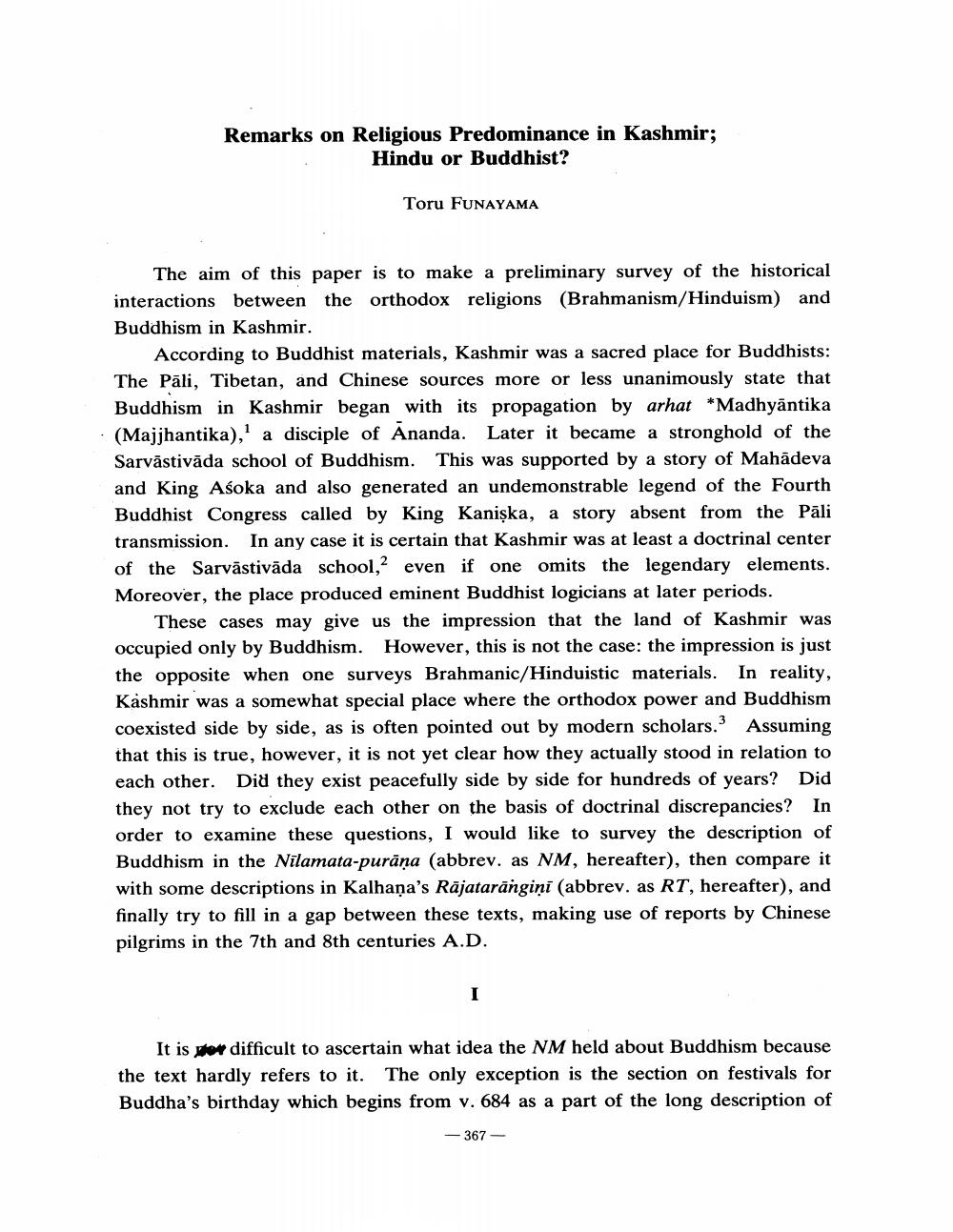Book Title: Remarks On Religious Predominance In Kashmir Hindu Or Buddhist Author(s): Toru Funayama Publisher: Toru Funayama View full book textPage 1
________________ Remarks on Religious Predominance in Kashmir; Hindu or Buddhist? Toru FUNAYAMA The aim of this paper is to make a preliminary survey of the historical interactions between the orthodox religions (Brahmanism/Hinduism) and. Buddhism in Kashmir. According to Buddhist materials, Kashmir was a sacred place for Buddhists: The Pali, Tibetan, and Chinese sources more or less unanimously state that Buddhism in Kashmir began with its propagation by arhat "Madhyantika (Majjhantika), a disciple of Ananda. Later it became a stronghold of the Sarvästivāda school of Buddhism. This was supported by a story of Mahadeva and King Asoka and also generated an undemonstrable legend of the Fourth Buddhist Congress called by King Kaniska, a story absent from the Pali transmission. In any case it is certain that Kashmir was at least a doctrinal center of the Sarvästivāda school,2 even if one omits the legendary elements. Moreover, the place produced eminent Buddhist logicians at later periods. These cases may give us the impression that the land of Kashmir was occupied only by Buddhism. However, this is not the case: the impression is just the opposite when one surveys Brahmanic/Hinduistic materials. In reality, Kashmir was a somewhat special place where the orthodox power and Buddhism coexisted side by side, as is often pointed out by modern scholars." Assuming that this is true, however, it is not yet clear how they actually stood in relation to each other. Did they exist peacefully side by side for hundreds of years? Did they not try to exclude each other on the basis of doctrinal discrepancies? In order to examine these questions, I would like to survey the description of Buddhism in the Nilamata-purana (abbrev. as NM, hereafter), then compare it with some descriptions in Kalhana's Rajatarangini (abbrev. as RT, hereafter), and finally try to fill in a gap between these texts, making use of reports by Chinese pilgrims in the 7th and 8th centuries A.D. I It is or difficult to ascertain what idea the NM held about Buddhism because the text hardly refers to it. The only exception is the section on festivals for Buddha's birthday which begins from v. 684 as a part of the long description of -367Page Navigation
1 2 3 4 5 6 7 8 9
